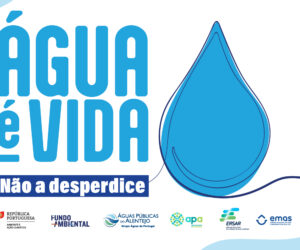Opinion (Rogério COPETO): ROAD ACCIDENTS WITH ANIMALS
On Christmas Day 2013 on National Highway No. 114, between Évora and Montemor-o-Novo was the most burdensome road accident with animals this year, involving two passenger cars and a horse on the loose, causing four deaths and four serious injuries.
Lieutenant Colonel of the GNR
Master in Law and Security and Homeland Security Auditor
Head of the Education Division / Command Doctrine and Training
This article presents the main conclusions of the analysis of road accidents with animals, recorded in the action zone of the National Guard in 2013, which it was then drafted by the fact of the matter little or nothing has been studied, either in the country or outside, there is also not any scientific study that reveals, what we present here.
The accident mentioned above and which occurred on Christmas Day 2013 was the most serious occurred throughout the year 2013 and not part of the study, to have occurred in the jurisdiction of the PSP.
So, the National Guard recorded in the year 2013, 1.799 road accidents across the country, collisions involving pedestrians or animals, with a result of these accidents, a morte de cerca de 2.000 domestic or wild animals.
About half of the dead animals were dogs, also where the wild animals are found in large numbers, mostly boars, foxes and deer.
Unfortunately the consequences are not only to mourn the death of animals, although the vast majority, not go beyond the damage to the car, We also regret in 4,5% of 1.799 accidents that occurred in the area of GNR, minor injuries in 77 drivers and / or passengers and serious injuries in 3, not being registered any fatality.
The analysis to 1.799 accidents with animals it appears that the time of day where there is greater likelihood of accidents with animals is between 18.00 and 24.00, to be the time of day when there is an increase in the circulation of road traffic, with most of the population to return home after a day's work, which is also the time of day in which animals are more active, especially wild animals, having occurred during this period 44% of all crashes.
It was also found that national roads are those which occur 38% accidents, followed by the main itineraries 31%. However, not all these results show districts, districts where there is on motorways, that occurred most accidents, By having a larger network such pathways. These are the districts of Lisbon with about 66%, Porto District about 62% accidents with animals occurring on motorways and Braga with 55%. This data can be influenced by the fact of GNR not have jurisdiction within the cities and therefore are not accounted for accidents occurring within the same.
It was also found that with regard to the months of the year, the month of January was recorded the highest number of accidents with about 13%, but the difference for the remaining months is not significant, verifying the same with the weekdays, It is the 6th Monday the day with more accidents, representing 16%, varying the remaining days of the week between 12% and 14%.
Animals that have caused the most serious accidents were the dogs, with 45% the wounded, followed by wild boar and cattle, both with 18%, and that of accidents with horses, resulted 11% accidents with injuries.
The districts most likely to meet wild boars on the road are the Setúbal district, Castelo Branco and Evora, more than half of all accidents (52%) and finding horses are the districts of Faro, Beja, Braga, Setúbal, Viana do Castelo and Vila Real, whereas these districts happened about 80% of accidents with these animals. Also the sheep can be found most likely in the districts of Castelo Branco and Evora, It is responsible for these districts 37% of all accidents caused by sheep.
Also, as a corollary of the aforementioned conclusions, It presents a set of behaviors, that drivers can take on the road, in order to avoid accidents with animals and avoid the resulting consequences, either for animals, both for people and vehicles, this information that we found, na height, does not exist, so it is the same fruit of the experience and analysis, by analogy, of car collisions with obstacles on roads.
Therefore and especially in times and places indicated above and which are more likely to find an animal on the road is advisable to circulate with redoubled caution, slowing down and meet the indicator signaling danger crossing animals, domestic or wild.
However when you are an animal on the road should be carried out as follows:
– Avoid honk or make light signals, why or scare the animal or linked together in the;
– Avoid sudden deviations (twists) which may cause the vehicle to screening;
– When you see an animal, the speed should be reduced gradually until you can work around it safely;
– If you can not avoid shock, at the time of the clash not post or deviate, as with brake, the front of the car and low if it is a large animal can be designed for glass windshields;
– Whenever sighting an animal on the road should immediately report this to the GNR, even if the animal is found by the roadside, to be collected;
– It should also be contacted GNR whenever it finds a dead animal on the road, to be taken from the same.
In the case of livestock animal owners incur a fine provided for in paragraph 6 of article 97 of the Highway Code 30 a 150 euros, by allowing the animal to roam the public road endangering traffic.
In addition to the infringement indicated above and in accordance with the DL 155/2008 of 7 August amending Decree-Law No. 64/2000, of 22 April, the owner or keeper of the animals must ensure their safety and to ensure that these do not cause injury to persons, and other goods or animals. Failure to comply with these obligations is punishable administrative offense with a fine whose minimum is € 1,250 or € 3,750 and a maximum of € 3,740 or € 44,890, depending on the agent is natural or legal person.
In the case of wild animals, there is no penalty, because the animals are not owned by anyone.
Not having as main concern, the possibility of being fined for infractions, should first of all livestock owners ensure that they do not roam the public roads, for thus do not cause road accidents, or that they are dead as a result of these accidents, after mourning the death of your pet, are other more serious consequences, not earned on that behavior, even if negligent, as accountability for damage and injury or death of people.

























